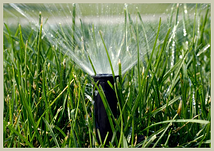 Proper irrigation is essential for maintaining lawn and garden health. But many homeowners are confused about irrigation options. If you’re comparing in-ground watering systems, the following tips may help.
Proper irrigation is essential for maintaining lawn and garden health. But many homeowners are confused about irrigation options. If you’re comparing in-ground watering systems, the following tips may help.
First, choosing between drip watering and spray irrigation is a basic decision you will have to make. The choice should depend on factors such as the size of your lawn, the plants you wish to grow, and your budget. While spray irrigation systems are more commonly seen, you should consider the advantages of drip irrigation before making a final decision.
In general, spray irrigation systems are better for covering larger areas. Typically these areas are home to plants that do not have very precise water requirements. Drip irrigation, on the other hand, tends to be more precise in administering particular quantities of water over a given period of time. It can also work better when you need to irrigate a plot of land that is not flat. While drip irrigation systems deliver water directly onto the ground, spray systems disperse water into the air over an expanse of land so that it falls down in the same manner as rainwater.
Spray irrigation systems can be easier to move around and relocate, and their installation does not typically require as much work as a drip irrigation system. Permanent spray irrigation systems can be installed with buried water lines, and they can regularly deliver large quantities of water to your plants.
One disadvantage of spray irrigation is an increased risk of overwatering plants and bringing about problems caused by excessive moisture, such as the growth of fungi.
One major advantage of drip irrigation systems is their increased efficiency in terms of water usage. Drip irrigation systems lose less water to evaporation and runoff than spray systems. This can be important in very dry areas where drought is a constant possibility. Drip irrigation delivers water slowly and directly, and most drip irrigation systems put you in precise control over how much water your plants are getting.
On the downside, installation of a drip line irrigation system can be cumbersome, time-consuming, and costly. Drip lines often require a water pump, and they need to be maintained at a certain pressure to ensure the water continues to flow through the system. Drip lines can present hazards due to the fact that they require a line to rest about the ground, creating the potential to trip people walking in a yard or obstruct equipment such as mowers and trimmers.
In order to choose the best possible irrigation system for your yard, do your research before making a decision. Contact our team of expert landscape designers and irrigation professionals. We’re happy to answer any questions you have.
See Our Blog Posts Below:
Watering Your Lawn: Drip vs. Spray Irrigation
Posted by
John Tighe on Wed, Jun 26, 2013 @ 08:25 AM
Tags: landscape irrigation

 781-646-5555
781-646-5555